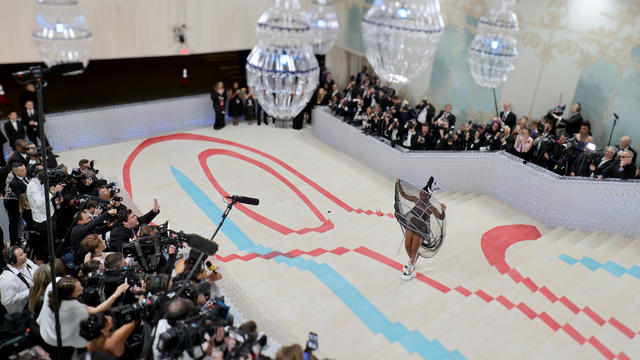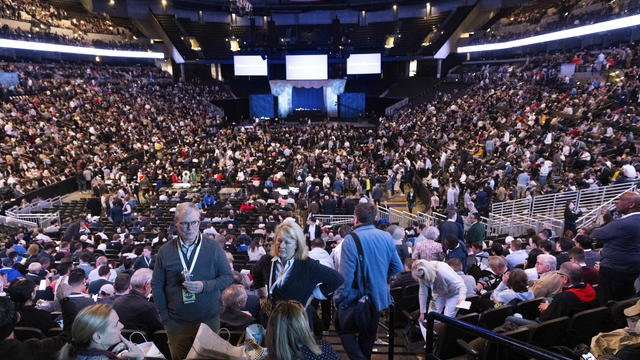The Fed hiked interest rates for the first time since 2018. Here's how that could hit your wallet.
Americans have gotten used to low interest rates for borrowing money, making it cheap to take out a loan for a home, car or other needs. But consumers will now find themselves paying more for all types of loans and credit this year now that the Federal Reserve has raised interest rates for the first time since 2018.
Fed officials on Wednesday afternoon announced that they are raising the central bank's benchmark short-term interest rate 0.25%. That might not seem like much, but a quarter point move in the federal funds rate is expected to be only the first of several such increases this year as the Fed normalizes monetary policy and tries to douse the steepest inflation in decades.
The increase also marks the first time in four years that the central bank has hiked rates, signaling that the era of cheap money is drawing to an end. The Fed's rationale behind the rate increase is to put the brakes on inflation, which last month reached a 40-year high of 7.9%. By making it more expensive to borrow money to buy a home, car or other goods, policymakers hope that some consumers and businesses will decide to hold off on purchases, in turn dampening price increases due to lower demand.
"Because rates go up, mortgages and cars become harder to afford," said Dick Pfister, CEO of Alphacore Wealth Advisory, told CBS MoneyWatch. "The benefit will be — if they can do this without causing a recession — it should bring inflationary prices down."
The Fed is looking at economic indicators such as the labor market, with the unemployment rate close to its pre-pandemic levels. Yet while the economy is on solid ground, there are risks with the Fed's shift in strategy given that higher interest rates mean yet another cost that household budgets must absorb.
"It's really a very thin needle to thread for the Federal Reserve," Pfister said. "We have had this easy money mentality for such a long time, it'll be hard to wean the economy off that mentality."
What will the rate hike cost you?
Every 0.25% increase equates to an extra $25 a year in interest for $10,000 in debt. So if the Fed boosts rates by a total of 1.5% over six hikes this year, as many economists expect, consumers will pay $150 extra annually on that debt.
That can add up quickly, especially for borrowers seeking to buy big-ticket items like houses or cars, both of which have witnessed sharp spikes in prices during the pandemic due to low inventory and strong demand. Wall Street expects the Fed to raise interest rates at least six times in 2022, which would bring the policy rate to between 1.5% to 1.75%, noted LPL Financial strategists Lawrence Gillum and Ryan Detrick.
That could add to the budget crunch felt by many consumers, experts say.
"Households face the prospects of navigating a path between the Scylla of skyrocketing inflation and the Charybdis of rising borrowing costs," Matthew Sherwood, global economist at Economist Intelligence Unit, said in an email.
Credit cards, home equity lines of credit
Credit card rates are likely to inch up in line with the Fed's move because card charges are based on bank prime rates, which move in tandem with the Fed. Experts say to expect your credit card rate to inch up over the next few billing cycles.
Other types of credit with adjustable rates are also likely to see an impact, such as home equity lines of credit and adjustable-rate mortgages, which are also based on the prime rate. Auto loans may also rise, although these can be more sensitive to competition for buyers, which could mute the Fed hike's impact.
Mortgages have already been on the rise in expectation of the Fed's decision. The rate on a typical 30-year loan reached 3.85% for the week ended March 9, compared with about 3.05% a year earlier, according to Freddie Mac.
Still, mortgage rates don't usually rise in line with the Fed rate hikes. Sometimes they even move in the opposite direction. Long-term mortgages tend to track the rate on the 10-year Treasury, which, in turn, is influenced by a variety of factors. These include investor expectations about future inflation and global demand for U.S. Treasurys.
Savings accounts, CDs
One upside for consumers could be higher yields in your savings accounts and certificates of deposit — to some extent.
The problem is that even if your savings account starts paying more than today's measly 0.06% average interest rate, inflation is running far higher. In effect, you'll still be eroding the value of your money by socking it into a savings account.
"If [savings account rates] goes up to 1% and inflation stays close to 8%, you are still negative 7% in a real yield sense," said Pfister. "Unless the rate hikes tame inflation, you still still be upside down."









